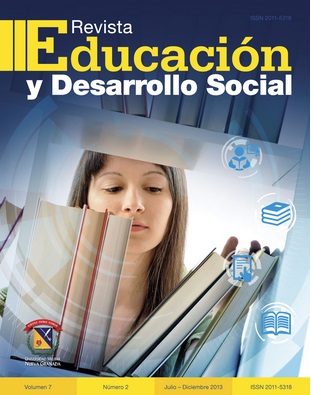Perceptions of university students about learning through mobile devices
Abstract
The mobile devices allow a wide variety of tasks at any time and place, making it an option to strengthen the reach of virtual education processes and enabling the design of virtual environments that promote experiences according to the needs of the learners. Therefore, the purpose of this paper is to examine the undergraduate students’ perception of the Engineering Organization Department (DIO - UNALMED) about mobile learning. For this, it has raised an exploratory research from quantitative methodological designs (self-administered questionnaires) and qualitative (depth interviews). It is concluded that although there is easy access to these devices, the Information and Communication Technology (ICT) focused on learning processes are generally little used and students prefer applications related to leisure and entertainment.
Downloads
References
Arteaga, F. (2012). Información y conocimiento. En VII Congreso Nacional de Bibliotecología. Documentación, Archivistica y Museología (Vol. 1, p. 15).
Cataldi, Z. & Lage, F. (2012). TICs en Educación: Nuevas herramientas y nuevos paradigmas. Entornos de Aprendizaje Personalizados en dispositivos móviles. En Anales VII Congreso de Tecnología en Educación y Educación en Tecnología. TE&ET (Vol. 12).
Geser, H. (2004). Towards a Sociological Theory of the Mobile Phone. Sociology in Switzerland, 3(1), pp. 1-47.
Gong, Z. & Wallace, J. D. (2012). A Comparative Analysis of iPad and Other M-learning Technologies: Exploring Students’ View of Adoption, Potentials, and Challenges. Multiple Literacies in the Technical Editing Classroom: An Approach to Teaching, 13(2), p. 2.
Grajales, T. (2000). Tipos de investigación. (On line, 27/03/2000).
Hashemi, M.; Azizinezhad, M.; Najafi, V. & Nesari, A. J. (2011). What is mobile learning? challenges and capabilities. Procedia-Social and Behavioral Sciences, 30, pp. 2477–2481.
Horvat, L.; Balen, J. & Martinovic, G. (2012). Proposal of mLearning system for written exams. En ELMAR, 2012 Proceedings, pp. 345–348.
Katz, J. E. & Aakhus, M. (2002). Perpetual contact: Mobile communication, private talk, public performance. Cambridge University Press.
Korucu, A. T. & Alkan, A. (2011). Differences between m-learning (mobile learning) and e-learning, basic terminology and usage of m-learning in education. Procedia- Social and Behavioral Sciences, 15, pp. 1925–1930.
Kuklinski, H. P. & Balestrini, M. (2010). Prototipos de Mobile Open Education: Una breve selección de Casos. IEEE-RITA, 5(4), pp. 125–131.
Laouris, Y. & Eteokleous, N. (2005). We need an educationally relevant definition of mobile learning. En Proceedings of mLearn.
Ozdamli, F. & Cavus, N. (2011). Basic elements and characteristics of mobile learning. Procedia-Social and Behavioral Sciences, 28, pp. 937–942.
Pollara, P. C. (2011). Mobile Learning in Higher Education: A Glimpse and a Comparison of Student and Faculty Readiness, Attitudes and Perceptions.
Serbanescu, L. (2010). Internet - A New Way Of Training. Designing An E-Learning Platforms. Revista Tinerilor Economisti (The Young Economists Journal), 1(14S), pp. 151–158.
Sherblom, J. C. (2010). The computer-mediated communication (CMC) classroom: A challenge of medium, presence, interaction, identity, and relationship. Communication Education, 59(4), pp. 497–523.
Strategy Analytics (2012). Worldwide Smartphone Population Tops 1 Billion in Q3 2012. Retrieved, 1, 2012.
Valero, C. C.; Redondo, M. R. & Palacín, A. S. (2012). Tendencias actuales en el uso de dispositivos móviles en educación. La Educación Digital Magazine, 147, pp. 1-21.
Wang, Y. S.; Wu, M.C. & Wang, H. Y. (2009). Investigating the determinants and age and gender differences in the acceptance of mobile learning. British Journal of Educational Technology, 40(1), pp. 92-118.













